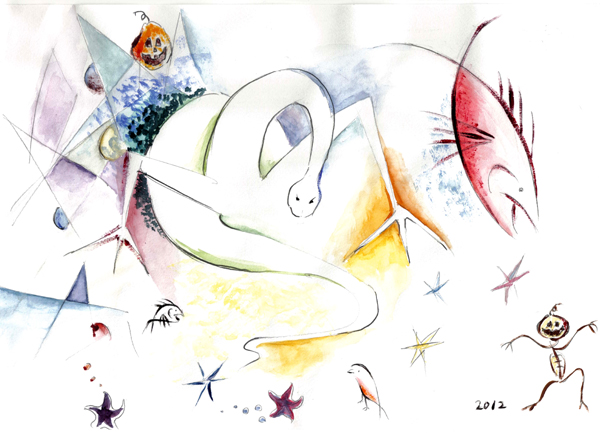|
When I was young, I loved to sit by a pond, sharing my lunch with the fishes and talking to them the whole afternoon, or else I would come home in the evening with my pockets full of grubs or beetles that I had collected during the day in my school garden. Each year, I so looked forward to the Chinese Festival of the Spirits, and I had a boundless enthusiasm for any film about dinosaurs. In the world of adults and in my professional work, I have to keep this childlike nature buried deep within me, but it still lives on beneath the surface and grows ever stronger. Happily, I am able to express it openly in my music written for children.
The present series of compositions for young players was commissioned by the Musikschule of Burghausen, Germany, an invitation I was delighted to accept, as it would give me the opportunity to share my secret world with the young pupils at the school. However, I had to think seriously about the aesthetic and compositional approaches I should adopt. A careful balance would need to be struck between fulfilling the educational goal — to introduce contemporary musical language to children of school age — and gaining the interest and enjoyment of all the young musicians involved. I decided to include familiar ingredients such as tunes, tonality and regular rhythm so that the music would not sound too strange or “ugly”, and at the same time to incorporate some elements of “new music” while always maintaining a sense of playfulness.
A Child’s Universe consists of twelve pieces divided into four groups of three pieces. Each of the three groups for a particular set of instruments has a common tonal system, which creates a unified sound environment: for the wind ensemble, modality; for the guitars, chromaticism; for the strings, pentatonicism. In the combined ensemble group, connections are made with the pieces in the particular instrumental ensembles to enable the children to put into practice all the new things they have learned earlier.
And now for a few pointers about how to use A Child’s Universe.
1 Each group of three pieces has been conceived as a unity, but the pieces can be performed in any order within the group, or even individually.
2 If a particular instrument is unavailable, a substitute of similar compass and general timbre may be used. Where a non-transposing instrument is used instead of a transposing one, versions of the parts in C are available on the CD.
3 The number of musicians playing each instrumental line is not fixed, but every effort should be made to achieve a suitable balance within the ensemble.
For the genesis of this series of pieces, I especially wish to thank Helmut Lorenz, Director of the Musikschule of Burghausen, who not only gave me this pleasing commission but also provided all-round support during its realization. Thanks also to my publisher, Edition HH, for making a very fine job of the engraving and enabling this cycle to be published. Finally, my thanks to all the participating teachers and pupils in the town of Burghausen who achieved such splendid results when bringing these compositions to life.
Ming Wang
Vienna, June 2012
Translation: Michael Talbot
|

